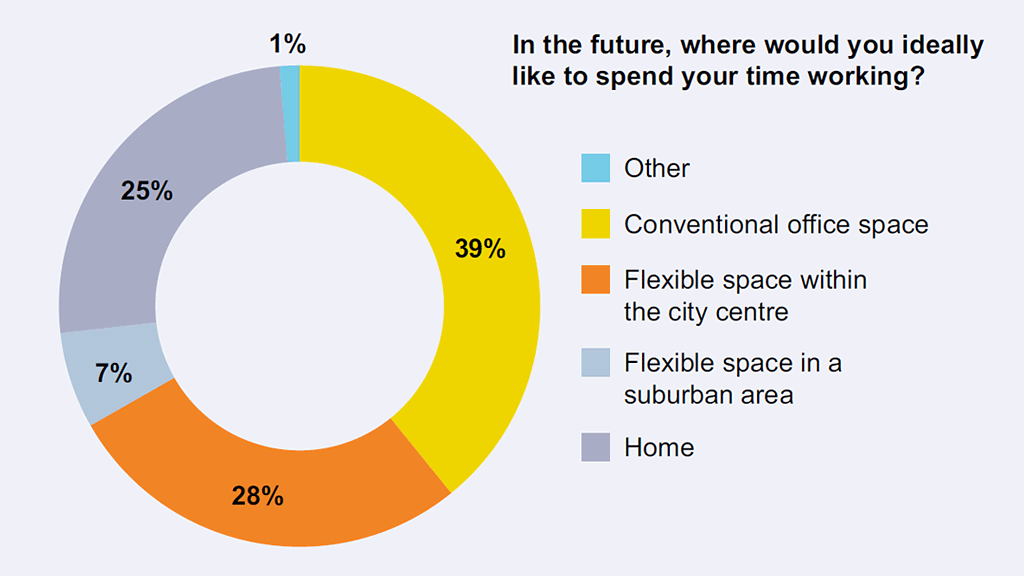Our understanding of how people work best, what inspires innovation, and what nurtures wellbeing to shape the workplace as a vibrant personal and shared experience is based on scientific research.
These Workplace Trends Are Here To Stay
From contract-specific tradeshows like NeoCon to lifestyle-focused exhibitions like Maison et Objet there’s a growing focus on the workplace in all sectors of the design industry.
A 4-day workweek at Microsoft Japan boosted employees' productivity by 40 percent
While proper time management is a crucial skill to have in today's busy world, an experiment with Microsoft's Japan employees found out that going to work for four days in a week, instead of the usual five, resulted in more efficient meetings and increased focus in the office, making up for a 40 percent rise in employee productivity.
Why Face to Face Still Matters in the Workplace
Connecting with a colleague over text or chatting has more and more become a normal or acceptable form of communication in the business world.
How concern around workplace wellbeing is changing the planning agenda
Co-working spaces, serviced offices, managed offices and incubators are all part of a revolution in the traditional property supply chain.
Remote working key to winning the battle for talent
According to a new study conducted by the Centre of Economics and Business Research (Cebr) with support from Citrix Systems, Inc., companies that leverage technology to enable flexible and remote working models can not only attract talent, but increase employee engagement and productivity, potentially boosting the US economy by as much as $2.36 trillion a year.
40% Of Coworking Users Would Prefer to Work from a Conventional Office, new Research Finds
A joint-research from Gensler and the British Council of Offices (BCO) on the rise of flexible workspace in the UK corporate sector has uncovered that 40% of flexible space users would rather work from a conventional office, prompting questions about the viability of the flexible space solutions as it currently stands.
What Makes a Happy Work Environment?
Happiness is no longer an afterthought for businesses, but what elements go into creating a positive workplace? Is it a fancy office space? Juicy perks? CR speaks to an array of people working hard to ensure the wellbeing and happiness of their teams.
People-Side Factors Of Success In A Workplace Transformation
Workplace Privacy in the Age of Technology
While monitoring workers to some extent is nothing new (think motion sensors to control lighting, or even punch cards), the aggregation and granularity of what Humanyze, and other companies like Amazon and Walmart, are now doing is certainly noteworthy.
Firms not meeting the needs of a growing flexible workforce
32 percent of the surveyed workforce says that coordination with coworkers is their top frustration at work.
Many flexible office users would prefer to work in conventional space
According to a report, while the future of coworking is increasingly being explored as part of academic and industry research, there has been a limited focus on what it means for large corporate occupiers.
The language barrier to wellbeing in office design
In terms of office design, we are prone to borrow nuanced words from other languages to express ideas that otherwise need some explaining in English.
Neuro-Diversity: A New Lens For Workplace Design
In 2012 when Susan Cain’s book, Quiet arrived, it was a trigger to our industry to purposefully think, act, and design around one of the most fundamental dimensions of a person’s personality – whether you are an introvert or an extrovert.
Office envy: companies focus on the experience-driven workplace
Companies are taking note of the experience-driven workplaces offered by space-sharing operators, which have driven 41 percent of occupancy gains in the U.S. office market since the start of 2018.
“In the past, it tended to be only very high profile, high-margin businesses that were able or wanted to provide their employees with incredible workplace experiences,” says Ben Munn, Managing Director, Flexible Space at JLL.
But in recent years, even the most conventional companies are thinking about how to instill some of the valued amenities seen in flexible workspaces into their traditional offices.
“As a result of this trend, our clients are now thinking differently about workplace design, says Ed Nolan, Managing Director, JLL Consulting.
Large companies have seen the tangible benefits of hospitality-style amenities in their workplaces.
The impact of workspaces for people of color go beyond feeling welcome
The benefits are endless when people of color are provided with spaces where they can gather, where they can access and invest in companies that cater to them without having to go out of their way to locate them.
How to fight blue light and tired eyes in the office
The way we work is changing rapidly due to advances in technology. From the moment we wake up, to arriving at the workplace, then relaxing at home, much of our time is spent surrounded by or using screens.
Remote working can increase stress and reduce wellbeing
Nearly 70 percent of millennials would be more likely to choose an employer who offered remote working according to one study.
Architects Are The New Psychiatrists: Why Getting Into The Minds Of Humans Is The Biggest Design Trend Of 2019
The year 2019 challenged U.S. architects and designers to face a not-so-distant future where Uber aircraft and autonomous-driving vehicles become a reality.
Change Management Fails: How To Avoid Change Management Mistakes
Steelcase’s Dr. Tracy Brower shares the change management mistakes we’re making as an industry and how can we support the process more effectively.

























